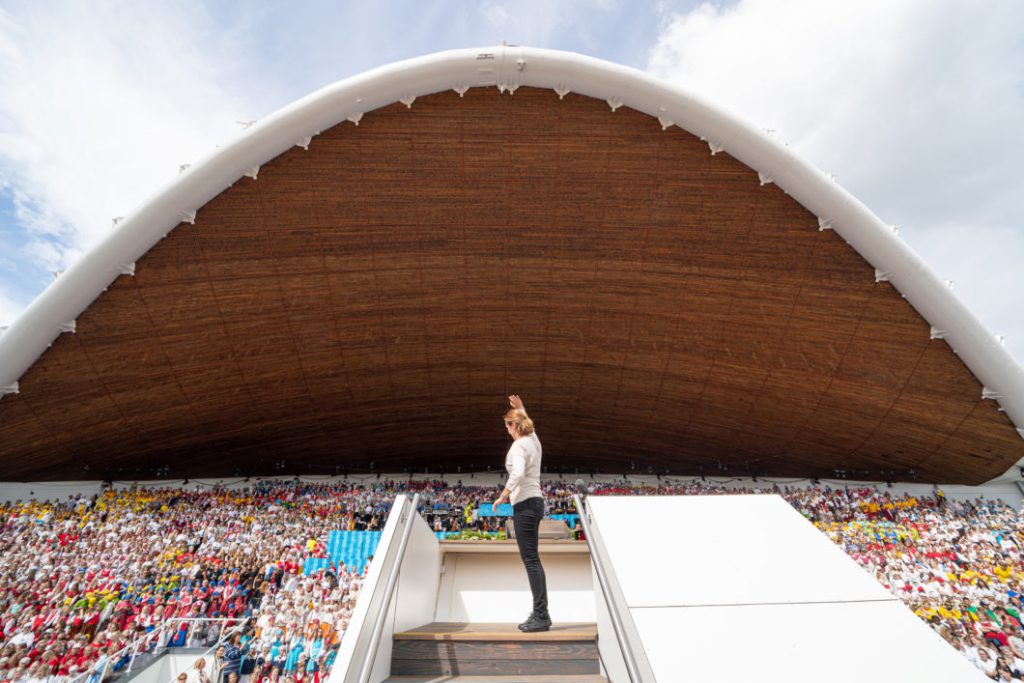Estonia’s cherished Song Celebrations take place beneath the iconic arch at the Tallinn Song Festival Grounds – but how was this architectural landmark created?*
More than 41,000 performers from across Estonia and abroad will take part in the XXVIII Song and XXI Dance Celebration from 3 to 6 July, with the 2025 festival, titled “Iseoma” (“Authentically Ours”), highlighting regional dialects, local character, and the vitality of folk tradition.
The first Song Celebration stage at its present location in Tallinn was constructed in 1928. Designed by architect Karl Burman, it accommodated up to 15,000 performers.

The choirs sounded powerful on the original stage, yet their voices failed to carry to the far side of the grounds. In 1957, a competition was launched to design a new song arch.
By then, Estonia was under Soviet occupation, and the communist authorities saw an opportunity to use the new structure for their own ends – namely, to mark the 20th anniversary of the Estonian Soviet Socialist Republic (as Soviet-occupied Estonia was officially called) in 1960. The winning design came from architects Alar Kotli, Henno Sepmann and Endel Paalmann.
A groundbreaking solution for its time
Kotli envisioned the song arch as a giant bugle and created a cardboard model to illustrate his idea. To bring the concept to life, he enlisted the help of Heinrich Laul, head of the engineering department at Tallinn Polytechnic Institute (now TalTech). Laul would go on to become one of the most distinguished Estonian engineers and building scientists of the 20th century.
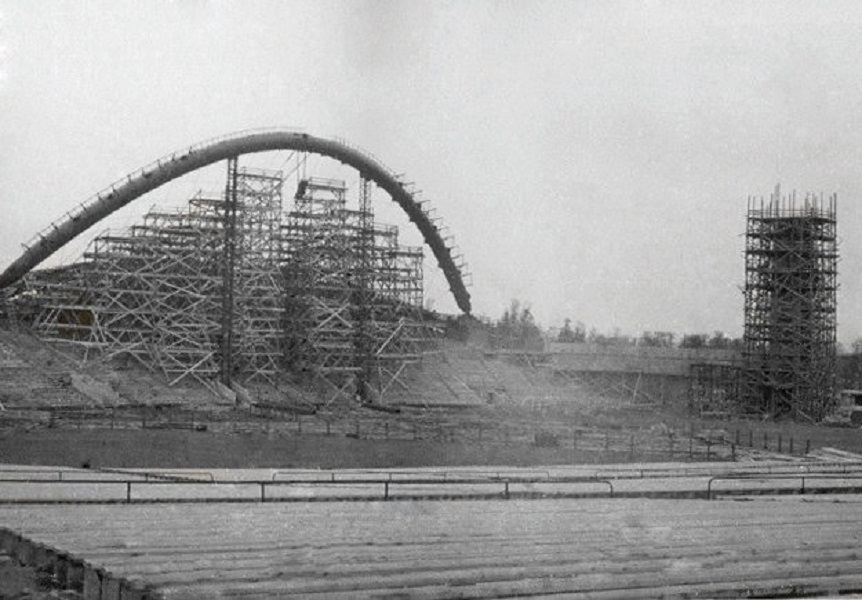
Laul explained that to capture the character of a bugle, the song arch needed two arches: one at the front and one at the back. Crucially, the front arch had to be free of supporting pillars – it had to appear “suspended in air” – so as not to obstruct access for the singers.
Visitors to the song arch today might wonder where the second arch is. In fact, the second reinforced concrete arch is hidden from view, leaning on the columns of the back wall. A partially concrete-filled steel pipe is suspended by cables between the front and back arches. According to Karl Õiger, Professor Emeritus at the School of Engineering at TalTech, the engineering solution was complex and, for its time, entirely unique.
The cables have now exceeded their original guarantee period by nearly three times
The durability of the structure was tested at the Polytechnic Institute under Laul’s supervision. Õiger, who was a student there at the time, recalled that when developing various projects, the process began with creating a model, which was then subjected to load testing in the laboratory. The team would subsequently assess how environmental factors might affect the structure over time.
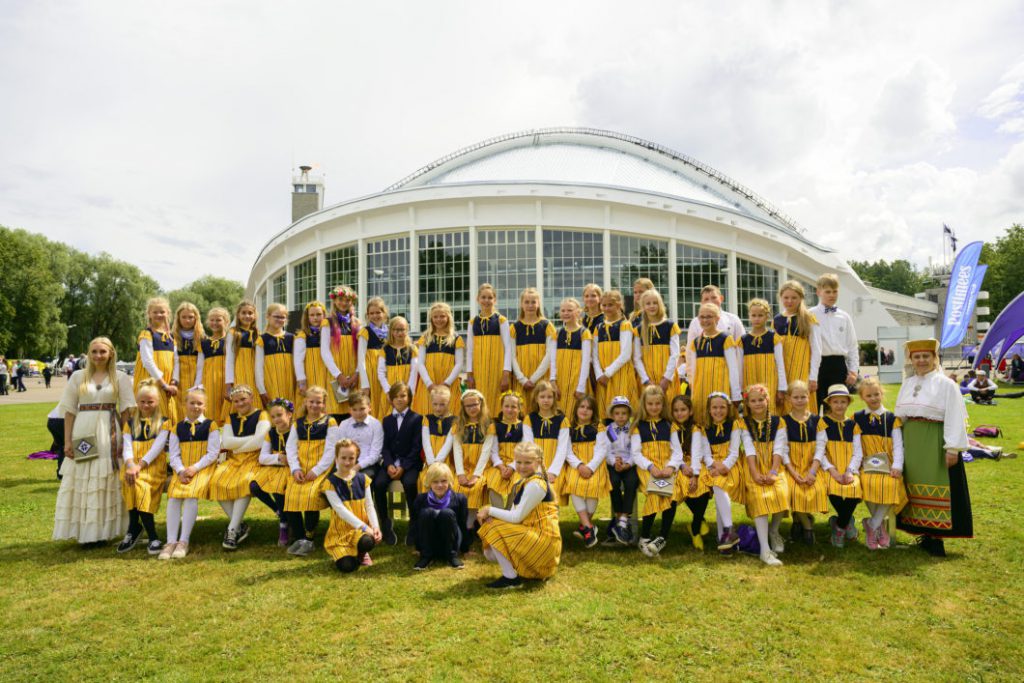
The entire weight of the roof is transferred to the front and back arches via 12 hollow suspension cables and stabilised by 19 additional curved cables. Each of the three-layered closed cables has a diameter of 38.5 millimetres (1.51 inches).
According to Õiger, five or six major construction firms refused to take the risk of manufacturing the cables. “What if it fails?” they would say, he recalled. Fortunately, one bridge-building company was willing to take on the challenge – though they offered only a 20-year guarantee. In reality, those same cables remain in place over 60 years later.
To assess the condition of the cables after surpassing their original guarantee period by nearly threefold, one suspension cable was recently removed and replaced with a new one, allowing the old cable to be examined internally. Laboratory tests revealed that the existing cables remain structurally sound and can safely be used for another 20–25 years.
Meanwhile, the wooden structures of the song arch roof were completely replaced in 2019, and the cables were thoroughly cleaned and treated to protect against corrosion.

A symbol that must be preserved
For Õiger, the song arch is far more than just a building – it holds profound symbolic meaning.
“During the Soviet era, it was one of the few places where people could come and express how Estonians truly felt,” he recalled. “Normally, we were expected to sing about Lenin, but here, we eventually sang the songs of Gustav Ernesaks.” He added firmly, “The song arch is a symbol that must be preserved at all costs!”
Ernesaks, a prominent composer and conductor during the Soviet occupation, was known for composing the “anthem” of Soviet-occupied Estonia – yet he also became a quiet icon of national resilience.
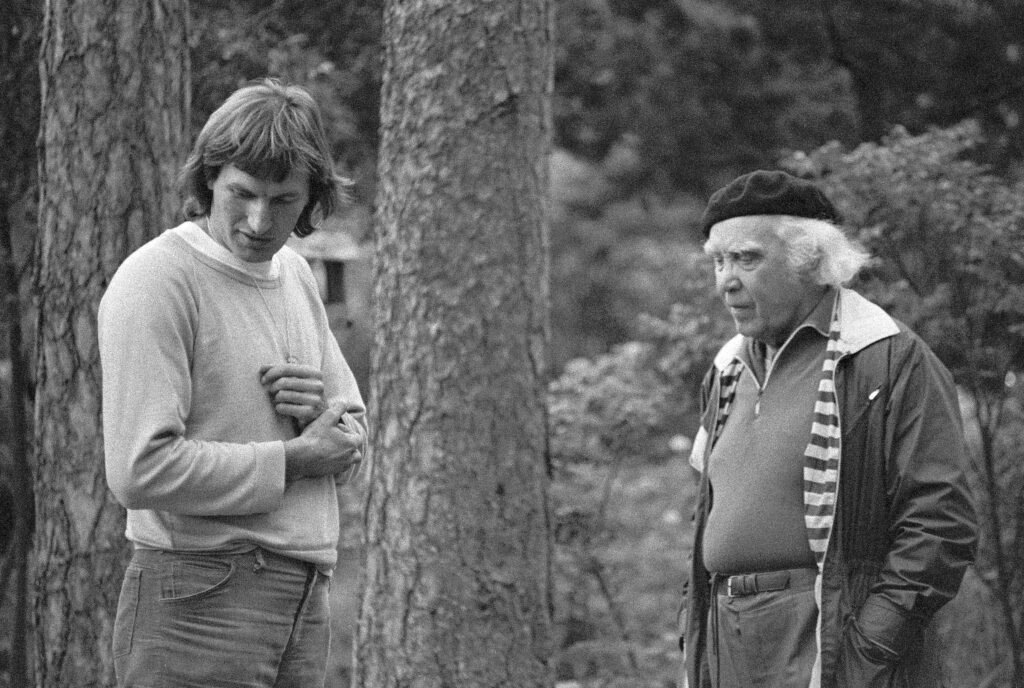
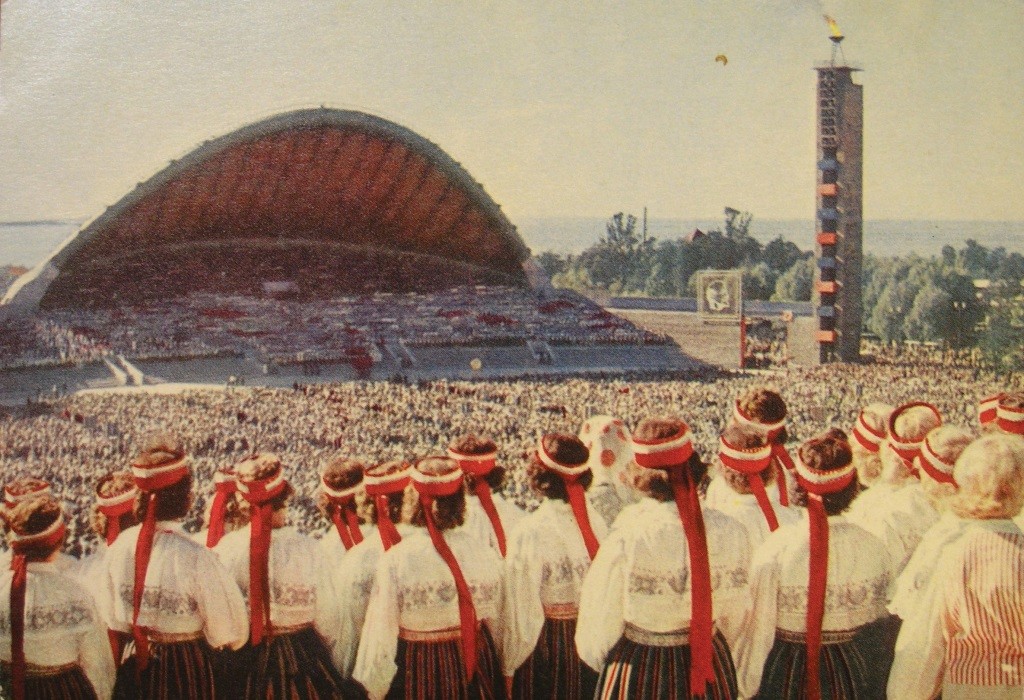
With grand structures like the song arch, Õiger also sought to inspire his engineering students by reminding them that the results of their work would be visible to all – and that, if done well, their creations could endure for decades, even centuries. “I would encourage young people to follow the words of Horace: Exegi monumentum – I have built myself a monument,” he said.
* This is an edited version of an article originally published on the TalTech website. It is based on an interview with Karl Õiger featured in the television documentary With Wit and By Hand: A Hundred Years of Innovation (Mõistuse ja käega: 100 aastat innovatsiooni) and the book Tallinn University of Technology 1918–2018. The original article was published on 26 July 2019.

